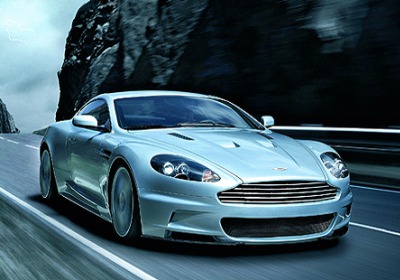Aston Martin DBS (2007): first official pictures
Fri, 17 Aug 2007By Ben Whitworth
First Official Pictures
17 August 2007 07:00
Oh my...
Yes, it kind of leaves you lost for words doesn’t it? Aston pulled the wraps of its new DBS super coupe today on the opening day of this year’s Pebble Beach Concours d’Elegance in California – the perfect setting for a show devoted to beautiful cars. “The DBS delivers the complete driving experience and bridges the gap between our road and track cars – the DB9 and DBR9,” Aston Martin boss Ulrich Bez told CAR. “It’s the ultimate expression of Aston Martin’s engineering and technical ability. It offers pure performance without compromise.” The DBS arrives next spring. There’s no word yet on official prices, but we reckon you’ll need at least £160,000 to be in with a shout. The coupe – first seen in latest Bond film Casino Royale – is powered by Aston’s hand made 6.0-litre V12 – a heavily revised version of the all-alloy powerplant that powers the DBR9 racing car that’s been tuned to deliver 510 bhp at 6500rpm and 420 lb ft of torque at 5750rpm – enough to rocket the alloy-intensive DBS to 62mph in 4.3seconds and onto a 191mph top speed. The race-bred powerplant features a new by-pass air intake port that opens above 5500rpm to boost engine breathing as well as re-profiled air inlet ports that further improve airflow into the combustion chamber.
Keep going…
For such a technically advanced and track-oriented car, we’re surprised that there’s no paddle-shift transmission – the DBS sticks to a conventional three-pedal layout with a six-speed manual gearbox, albeit with cogs stacked closer together and a shorted final drive to get the best out of the quad-cam engine. There’s no trick steering either – the rack and pinion steering features Servotronic speed-sensitive assistance and a relatively slow three turns between locks. Aston Martin’s engineers have complemented the DBS’s bonded aluminium chassis made of lightweight magnesium alloy, carbonfibre composite and aluminium. It’s the first production Aston Martin to make extensive use of carbon-fibre body panels and it shows in a 1695kg kerb weight – still surprisingly heavy but a still useful 65kg lighter than the DB9 coupe. Carbonfibre panels are used for the boot enclosure, boot lid, door opening surrounds, front wings and bonnet, saving 30kg over it’s alloy equivalent. “The carbonfibre material allowed us to wrap bodywork around the twenty inch wheels and maintain the precise relationship between the wheel and the bodywork,” says Marek Reichman, Aston Martin’s design director. The carbonfibre is finished in an patented Surface Veil process that applies a 200micron layer of epoxy and glass over the carbonfibre weave.
By Ben Whitworth

